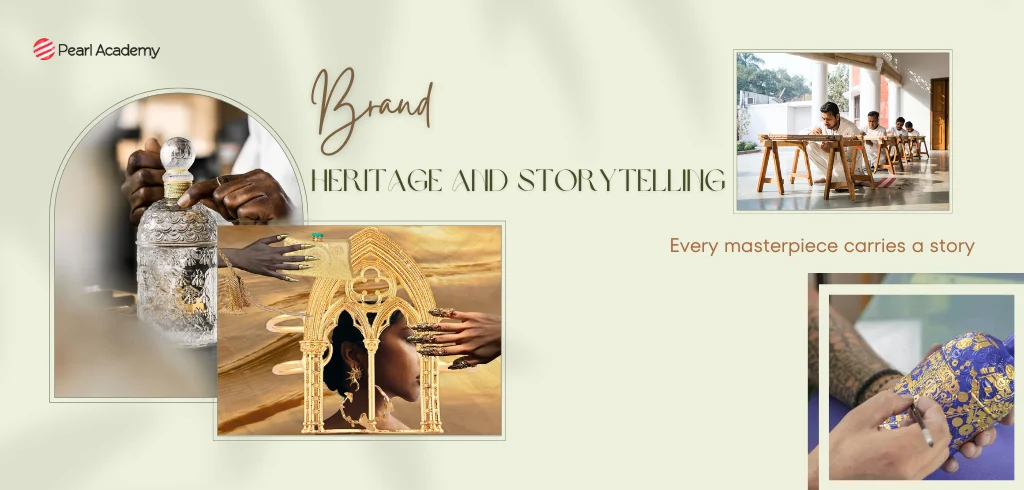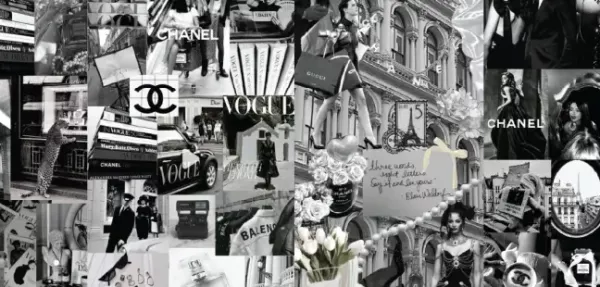Brand Heritage and Storytelling in Luxury Branding
- Divam Jain
- Published 15-Aug-2025

A company’s age is just a number. Brand Heritage is a concept much beyond that! It marks within itself the strategic cultivation of a brand’s origin, tradition, and values over time. As heritage builds on, permanence, prestige, and authenticity doubles- traits actively sought by luxury customers. Take Hermès, a company that started as a harness workshop in 1837. Its enduring craftsmanship and equine-inspired items recall its equestrian heritage, which is also perpetuated in its emblem. This is a deliberate act of narrativization and protection.
Take Louis Vuitton, the brand has exemplified this by merging heritage with modern art through collaborations with artists like Yayoi Kusama, infusing contemporary creativity into century old designs without diluting brand identity.
Become future-ready with our Business Programs
Know MoreThe art of storytelling plays a crucial role in building any brand heritage and the emotional resonance it echoes. When a luxurious customer walks into a showroom, he or she is not just looking for a material product. He or she is in search of what that product signifies, and what using that product would do to their personal image. For example, Rolex, which is worn by visionaries, astronauts, and deep-sea explorers, is more than just a watchmaker; it is a record of human achievement. This story is repeated in every Rolex advertisement by integrating the product into aspirational occasions rather than simply enumerating features. Research indicates that over 70% of luxury consumers consider a brand’s history before making a purchase (Bain & Company,2023), underlining the commercial importance of such myth-making in sustaining relevance and demand.
The concept of “myth-making” holds a prominent place in Brand Heritage and Storytelling in Luxury Branding. According to Douglas Holt's idea of cultural branding, famous brands serve as cultural storytellers who provide "ideological solutions" to social conflicts. In terms of luxury, this means providing permanence in a culture that values transience or timelessness in a world that is fixated on the new.
Why some luxury brands die overtime is because they fail to reinterpret their heritage. Stuck in old times and culture, they fail to re-innovate and change while keeping their foundation alive and still. Chanel’s continued homage to Coco Chanel’s design philosophy—through the little black dress, the interlocking C’s, and the No. 5 perfume is a strategic move by the luxury brand to stick to its roots, while remaining culturally relevant. Rather, it acts as a basis for contemporary manifestations of luxury, like as digital runway shows and new sustainability projects. Similarly, Dior has retained its allure by celebrating its design codes while embracing diversity in campaigns, striking a balance between exclusivity and inclusivity that resonates with today’s socially aware audiences.
With the coming of the digital age, the storytelling, the narratives, the brand building activities are not longer confined to just print and newspapers! All major luxury brands have their own Instagram handles, twitter pages, and other digital presence to speak to the larger audience that now resides on social media. These days, their opulent stories are told through AI-generated experiences, interactive websites, and Instagram reels. Ironically, though, this change has made authenticity even more crucial. Customers of today, particularly Gen Z, have a keen eye for flimsy branding. They call for purpose, openness, and cultural understanding.
Many luxury houses are also exploring immersive digital storytelling, such as Gucci Garden in Florence or Burberry’s interactive gaming campaigns, that transport consumers into brand worlds, making heritage feel alive in the digital era.
Here, heritage becomes a safeguard against inauthenticity. You can fabricate a brand and a story overnight by algorithms, but you cannot replace century-long commitment to craftsmanship, family ownership, or artisanal traditions. Use AI, social media promotion to scale content or personalize communication as much as you want, but the underlying narrative must still be deeply rooted in time, tradition, values, and authenticity.

Student Guidance Center: Our Counselors are Just a Click Away.
In conclusion, brand heritage and storytelling are not nostalgic indulgences in luxury branding—they are strategic imperatives. They serve the rightful purpose of differentiation, strengthening of bonds, and deepening of trust. Take the storytelling element, that’s deeply rooted in tradition, out and experience the whole domino falling in ONE HUGE CRASH! Remember, a luxury object becomes truly luxurious only when it bears the weight of history, narrative, and soul.
Works Cited
- Holt, Douglas B. How Brands Become Icons: The Principles of Cultural Branding. Harvard Business School Press, 2004.
- Kapferer, Jean-Noël, and Vincent Bastien. The Luxury Strategy: Break the Rules of Marketing to Build Luxury Brands. Kogan Page, 2012.
- Urde, Mats, Stephen Greyser, and John Balmer. “Corporate Brands with a Heritage.” Journal of Brand Management, vol. 15, no. 1, 2007, pp. 4–19.
- Kapferer, Jean-Noël. “Abundant Rarity: The Key to Luxury Growth.” Business Horizons, vol. 58, no. 5, 2015, pp. 509–519.
Divam Jain
Divam Jain, Associate Professor at Pearl Academy’s School of Business, is a seasoned fashion professional with nearly 20 years of experience in fashion design, buying & exports, e-commerce, international sourcing, consultancy, and academia. A scholarship recipient from Nottingham Trent University, U.K., he has worked with global brands. At Pearl Academy, he specializes in luxury brand management and fashion business strategy, mentoring students, creating industry-relevant curricula, and building strong industry linkages to prepare future leaders.
Tags
- #Business
Pearl Admission Enquiry
Subscribe to Pearl Blogs
By clicking the "Subscribe" button, I agree and accept the privacy policyyy of PEARL.




















































